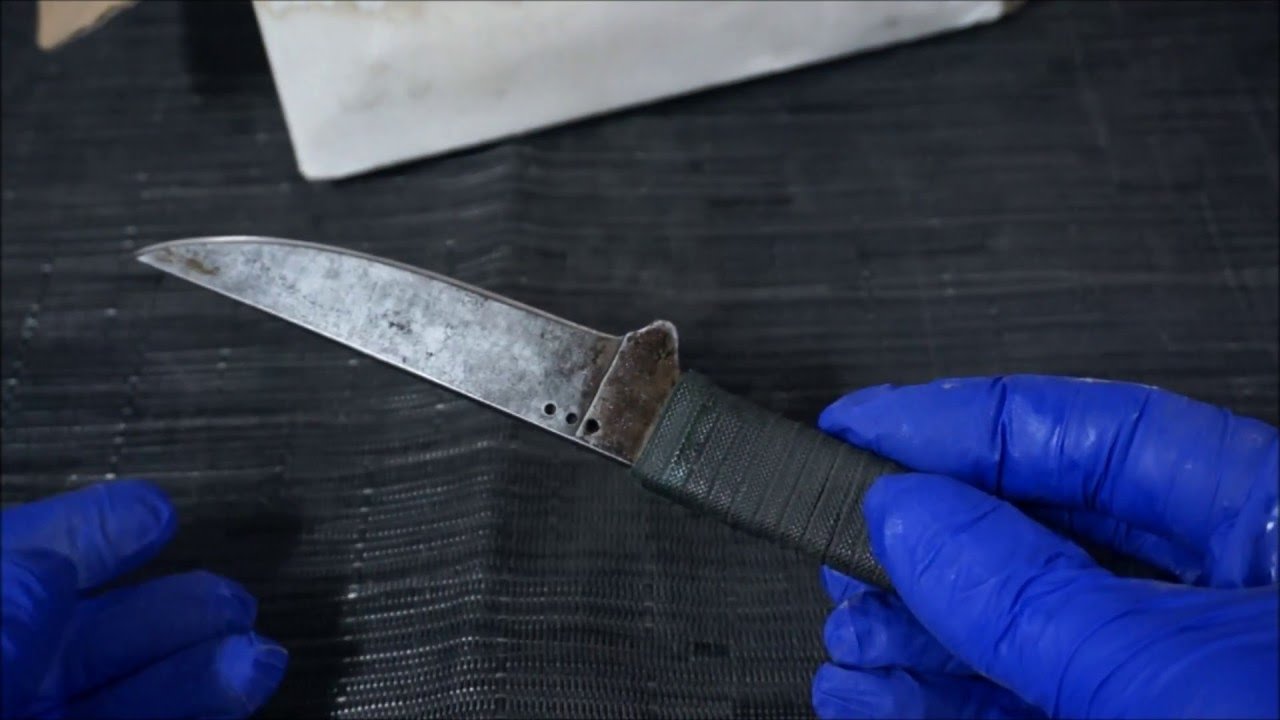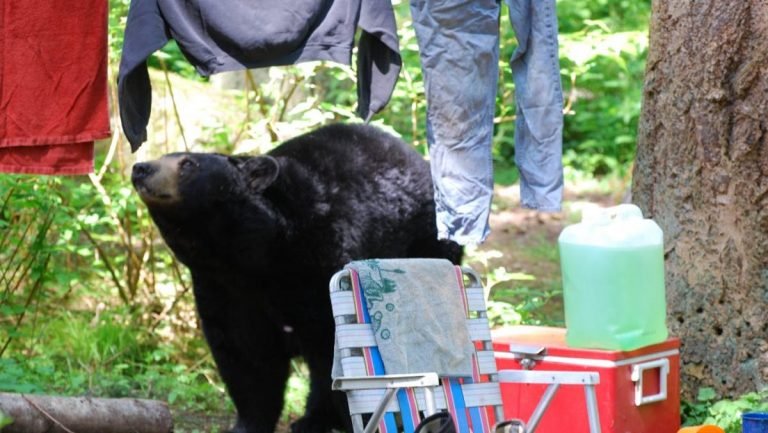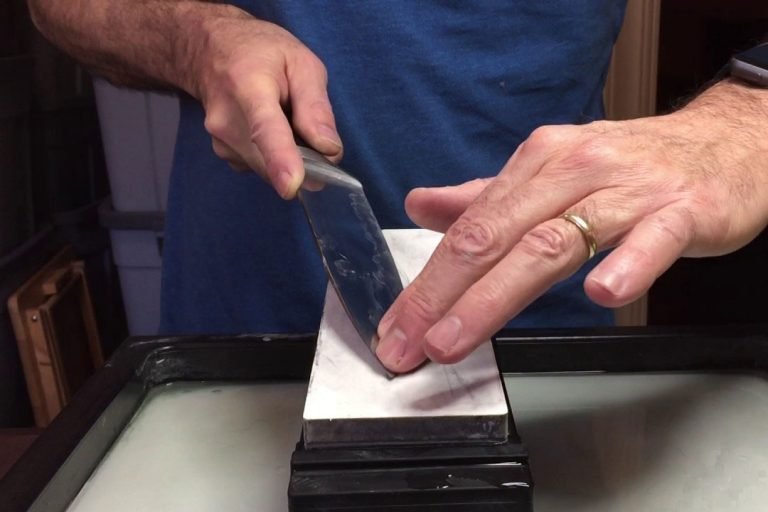What Are The Best Steel for Knives?
Knife steel is a critical component of any type of a knife. For you to make a fine knife you need to have patience and dedication to precision craftsmanship. You need to understand the science around metallurgy when choosing the best steel for knives.
The steel choices also vary depending on your needs. Fro example, bushcraft knife will certainly require different steels than chef’s knife.
This is because steel is basically a combination of carbon and iron. With steel consisting of other elements such as iron, sulfur, silicon, phosphorous, and manganese, you should know that if nothing else is added to it, the steel is termed as plain carbon.
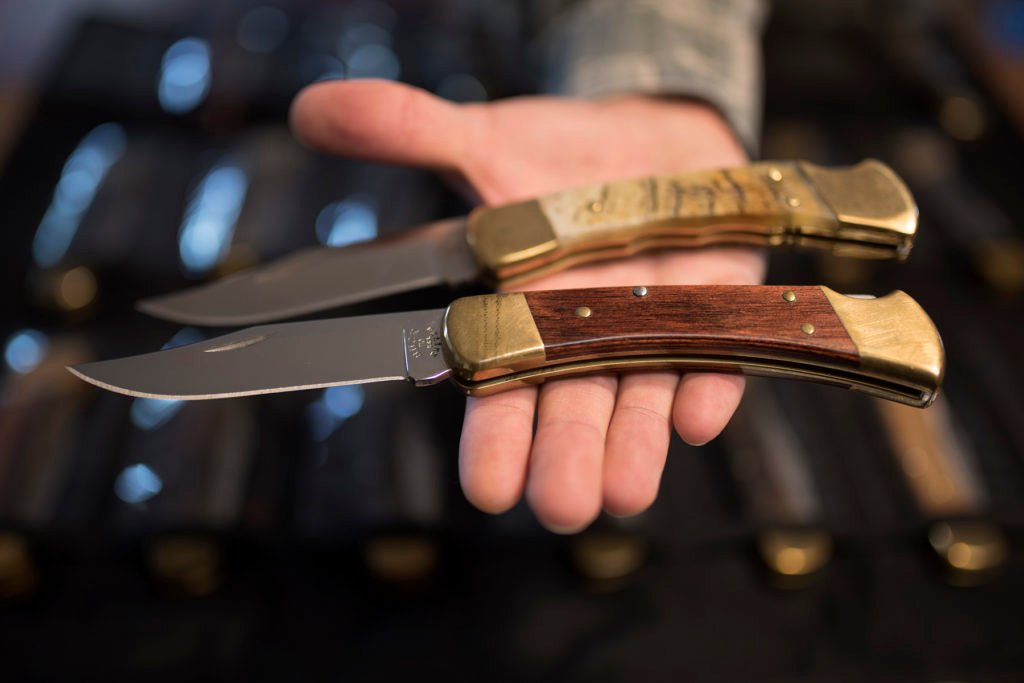
Steel is widely being used in making knife blades and is enhanced with some additional elements known as alloy steels.
Combinations of various steel are the ones that give steels their special properties. Some alloy steels can get additions to improve the quality of the steel, making it corrosion resistant and easier to sharpen, thus becoming the best steel for knives.
What Should Be In The Best Steel For Knives?
To come up with excellent steel, given steel is melted in a furnace and alloying elements added into the steel and then the molten steel is poured into ingots.
Once the ingots have solidified, they are now processed to make definite shapes and sizes of knife blades.
Plates and coils can be used, depending on the type of steel as well as its thickness.
These plates are now turned into knife components by laser coils and cuttings are shaped into components with the use of fine blanking press.
How to Choose Steel for Knife Making?
Properties Of Blade Steel:
During steel manufacturing, selection of steel to be used is based on specific properties and other factors like usefulness.
This means that if the steel is hard to fabricate, then it should not be used in a manufacturing environment.
These properties are established by alloys that are added to the steel via manufacturer’s methods. Some of best steel for knives characteristics include:
- Hardness-this refers to steel’s ability to resist permanent deformation (measure on Rockwell scale)
- Strength-its ability to resist applied force
- Harden-ability– steel’s ability to be hardened through heat treating process
- Ductility-its ability to bend or flex without fracturing
- Edge retention-its capability to maintain sharpness for long
- Toughness-steel’s ability to absorb energy before fracturing
- Corrosion resistance– its ability to resist rust as a result of environmental reaction
- Wear resistance-ability to resist wear and tear when being used
Since there is no known material that is superior in all categories of properties, knives manufacturers select materials that offer the most favorable properties for the intended purpose.
Steel Classification:
Classification used to describe types of steel and their properties is usually determined by the structure of the metals.
When the steel is being heated or cooled, its internal structure undergoes some changes. Structures that are formed during these stages are known as Austenite and Martensite.
With Martensite, it is a very hard structure that can only be formed by cooling and heating some types of steel during heat-treating.
Alloy additions in making the best steel for knives:
Properties of steel can be altered by adding some elements to the steel during the melting process. Below are alloying elements that are crucial to knife blade making:
Carbon-this is not necessarily an alloying element since it is present in plain carbon steel. However, if you increase its content it increases hardness.
Chromium– this hardens the steel and also makes it wear and corrosion resistant. It is one major element in Martenistic steels which are mostly used on sports cutlery applications.
Molybdenum– this element is crucial in hardening the steel, tensile strength, and corrosion resistance.
Nickel-it improves hardness, toughness, and corrosion resistance.
Vanadium-it promotes fine grains and hardness. Grain structure in steel is a crucial factor in wear and tear resistance. Normally, fine grain structures are desirable.
10 Most Popular Types Of Steels
1. 17-7PH
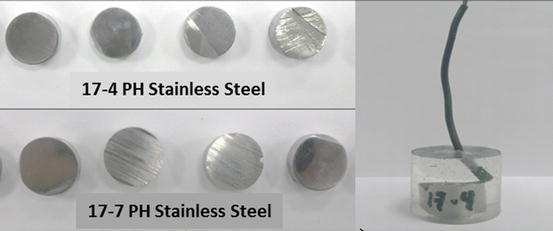
This alloy is chromium nickel aluminum liquid hardening stainless steel offering good edge retention. It offers good corrosion resistance and is awesome for water sports applications.
Being a great corrosion resistance means it has high chromium content.
This only means that those knives made with this steel will be somehow harder to sharpen than the ones with lower chromium contents.
One of the popular knives that use this steel is Smith & Wesson CKTACBSD Tactical knife. It is a classic model knife manufactured by Smith $ Wesson.
Characteristics:
- Good toughness
- Excellent corrosion resistance
- Moderate edge holding
Rockwell hardness-54-56
2. 154CM
It is a high carbon steel with molybdenum added to it. Since it offers better edge retention than standard stainless steels, it is a good choice for knifes used on heavier cutting applications. One of the best 154CM knives is Benchmade Fixed Blade Griptilian knife and mini Griptilian knife, both manufactured by Benchmade in USA.
Characteristics:
- Awesome edge holding ability
- Good corrosion resistance
- Good toughness when it is double tempered
- Less expensive than S30 and BG-42
Rockwell hardness-60-61
3. 420J2
This is a lower carbon content that is a general purpose stainless steel. It is known for being corrosion resistance and high ease of sharpening. It is suitable for knife blades used for medium applications and routine applications. One of popular 420J2 steel is C79psor folding knife, and C11S Delica serrated edge, both manufactured by Spyderco.
Characteristics:
- Good manufacturability
- Fine blank-able
- Easy to sharpen
- Good corrosion resistance
Rockwell hardness- 56-58
4. BG-42
This is a high performance alloy of Timken Latrobe Steel that bears grade Martenistic stainless steel used in aero scope industry. As a result of its ability to reach high Rockwell hardness, it is suitable for knife blades that are subjected to extreme use. One popular knife that uses BG-42 steel is CASE61 BG42 slim lock folding knife, and mother of pearl slim lock. They are manufactured by W.R. Case & Sons.
Characteristics:
- Fair corrosive resistance
- High strength
- Good edge holding ability
- Contains vanadium which improves hardness and fine grain structure
Rockwell hardness- 61-62
5. 420HC
This is a higher carbon edition of normal type 420 martenistic stainless steel. This carbon steel, when it is combined with high chromium content, it offers a good edge holding and abrasion resistance. However, you should not confuse it with 420 since 420HC is a great general purpose knife steel when heat-treated. One of the knives that use 420HC is Alpha Hunter Drop Point with black handlewhich is manufactured by bucks Knives Company.
Characteristics:
- Awesome toughness
- Easy to sharpen
- Good corrosion resistant
- Standard knife steel
Rockwell hardness-58
6. S30V
This steel contains carbon that has high amount of chromium, vanadium, and molybdenum. It is double tempered for edge retention and hardness making it perfect for knife blades meant for tough works. Spyderco UK Penknife Leaf Blade model is one of the popular knives that are manufactured with S30V steel by Spyderco.
Characteristics:
- Excellent corrosion resistance
- Slightly hard to sharpen
- Improved hardness
- Awesome edge retention
Rockwell hardness- 59.5-61
7. Sandvik 12C27
This stainless steel is made in Sweden and is generally known to be premium steel for knife blades, making it one of the most popular knives in the world. It is suitable for knives meant for medium tasks. LMF II ASEK-coyote brown is one of popular knife models that use this steel manufactured by GERBER.
Characteristics:
- Good balance of corrosion resistance
- Edge retention
- Easy to sharpen
Rockwell hardness-57-59
8. 440A
This is a high carbon stainless steel used in production of numerous knives. It is also suitable for medium and routine applications. One of the popular 440A knives is Gerber 22-41122 STL 2.0, Fine Edge Knife.
Characteristics:
- Good edge retention
- Easy to sharpen
- Good corrosion resistance
Rockwell hardness- 55-57
9. 1090
This is one of the popular choice for tactical knife. This steel is a plain carbon steel which means that it has low resistance to corrosion and edge retention. However, what makes this steel so popular is the fact that it is easy to sharpen. You will get an extremely sharp edge. Knives made of this steel also available at lower costs making them popular. One of the popular 1090 steel knives is Kabar Becker bushcraft knife, manufactured by Kabar knife, Inc.
Characteristics:
- Low corrosion resistance
- Low edge retention
- Easy to sharpen
- Extremely sharp edges
- Less expensive
Rockwell hardness-56-58
10. ATS-34
This is a very high carbon and chromium stainless steel that has additional amounts of molybdenum. Molybdenum makes it one of the most popular steels for knives suitable for heavy duty knife blades. Buck Tops/CSAR-T Knife is one of the most popular knifes made of ATS34 steel.
Characteristics:
- Good edge holding properties
- High corrosion resistance
- A bit hard to sharpen
- Great edge retention
Rockwell hardness- 60-61
What Is Your Choice?
With the above information on different types of steel, it will be easier for you to choose the best steel for knives. That way, nothing will ever get on your way when carrying out all types of outdoor activities.

